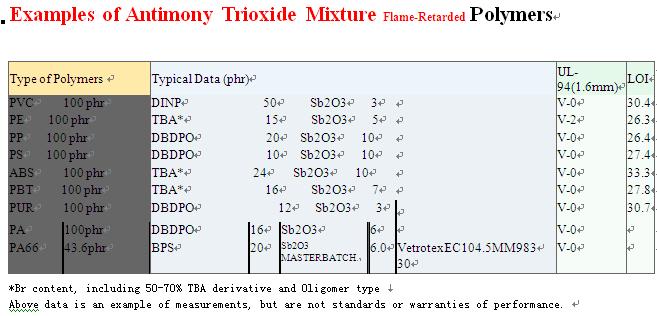Zone To Produce Silicon Alloys Had Considerable Decline In Its Output, Causing Tight Supply
The production activities of ferro-alloys in China for the first quarter (January – March) of 2009 were known. Namely, China produced 3,928,900 tons in total of ferro-alloys in January – March quarter of 2009, having decreased by 7.10% compared with that (4,227,900 tons) in the same quarter of 2008. For a reference, China produced 1,574,200 tons in total of ferro-alloys only in March of 2009, which had a decrease of 6.8% compared to that (1,689,000 tons) in the same month of 2008.
According to the data compiled and released by WSA (World Steel Association), China produced 127.44 million tons of crude steel in January – March quarter of 2009, having increased by 1.4% compared with that in the same quarter of 2008, and also produced 45.10 million tons of crude steel only in March of 2009, which had a slight decrease of 0.3% from that in the same month of 2008.
In comparison with a slight increase of crude steel production in China for January – March quarter of 2009, the total output of ferro-alloys in China for the quarter decreased to a considerable extent. This decline in production of Chinese ferro-alloys was due to a sluggish tone on exports of ferro-alloys from China and a sharp fall of prices for ferro-alloys caused by the depressed market. However, when the production activities of ferro-alloys at each district of China in the first quarter of 2009 were investigated in detail, the quantities of ferro-alloys produced in the so-called silicon land, consisting of Inner Mongolia Aut Region, Ningxia Hui Aut. Region and Gansu Province, had large decreases of 22 – 57% from those in the same quarter of 2008. These decreases in production of ferro-alloys had been caused by a severe winter climate but, as the silicon land faced the same severity in winter season of last year, the circumstances in both of 2008 and 2009 are thought to be on a similar level. Only the reason, why the production of ferro-silicon in China for the first quarter of 2009 had a substantial decrease, is supposed to be a negative intention to produce ferro-silicon as its price has fallen steeply. However, in August – September of this year when the stocks of ferro-silicon in Far Eastern region, including Japan, are anticipated to be reduced to reasonable levels, it is worried that price of Chinese ferro-silicon may have a sharp rise on the background of the tight supply.
On the other hand, although it was once informed that the production of manganese ferro-alloys in China is anticipated to have a large decrease, main districts in China contrarily increased the production. In view of the fact that China also produces manganese ores at local mines, main areas to produce manganese ferro-alloys in China have been symbolized by the four districts of Sichuan Province, Guizhou Province, Guangxi Zhuang Aut. Region and Hunan Province. In January – March quarter of 2009, Guangxi Zhuang Aut. Region had a slight decrease of 5.8% in production of manganese ferro-alloys but other three districts increased their production by 41.6% in Sichuan Province, by 46.4% in Guizhou Province and by 33.1% in Hunan Province respectively compared to those in the same quarter of 2008.
The market prices of manganese ferro-alloys had once reached a peak in August of 2008 but, after that, have turned to fall. Price of Chinese silico-manganese has currently come down to a level of US$1,100 per metric ton CIF Japan, which is half of US$2,450 as prevailed previously. Price of high carbon ferro-manganese is US$1,300 per metric ton CIF Japan at present.
Needless to say, these prices are not payable for its production costs. Accordingly, it was once informed that these manganese areas as mentioned above have decreased their output of manganese ferro-alloys in the first quarter of 2009 to a large extent but, on the contrary, the data indicated certain increases in production of manganese ferro-alloys at these areas. The market prices of Chinese manganese ferro-alloys, such as silico-manganese, have suddenly fallen considerably from February – March of 2009 and one of the reasons for this sharp fall of prices is supposed to be due to an increase in production of manganese ferro-alloys. It goes without saying that other factors are a sharp fall of prices for manganese ores imported into China as raw material and a positive action on sales of silico-manganese at discounted prices taken by India.
As an aftereffect on excessive imports of manganese ores committed by China in 2008, a surplus of manganese ores stocked in China is estimated at 1 – 2 million tons and it is essential for China to digest these excessive stocks of manganese ores as soon as possible. Even under the present situation which the international prices of manganese ores are in the direction to fall further for the future, China has been urged to digest the stocked raw materials. The main areas to produce manganese ferro-alloys in China are those, having delayed to develop its economic circumstances, and many of these areas have positioned to produce ferro-alloys as a core business for local economy. Therefore, from a point of view to sustain local economy, it is difficult for these areas to reduce their production of ferro-alloys







0 comment:
Post a Comment